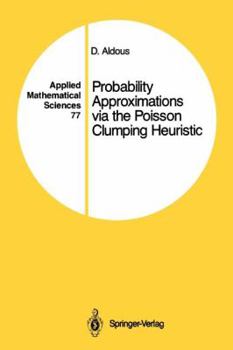Probability Approximations Via the Poisson Clumping Heuristic
Select Format
Select Condition 
Book Overview
If you place a large number of points randomly in the unit square, what is the distribution of the radius of the largest circle containing no points? Of the smallest circle containing 4 points? Why do... This description may be from another edition of this product.
Format:Paperback
Language:English
ISBN:1441930884
ISBN13:9781441930880
Release Date:December 2010
Publisher:Springer
Length:272 Pages
Weight:0.90 lbs.
Dimensions:0.6" x 6.1" x 9.2"













